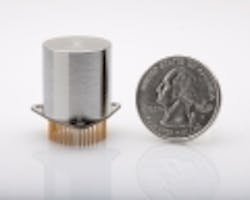AAI to develop airborne sensors that may enable UAVs to detect and attack submarines and surface warships
LAKEHURST NAS, N.J., 7 Oct. 2010.Unmanned aircraft specialist AAI Corp. in Hunt Valley, Md., will design airborne sensor technology that may enable unmanned aerial vehicles (UAVs) to detect and attack submerged enemy submarines and surface warships, as well as attack ground targets and participate in electronic warfare operations, as part of a $30.2 million U.S. Navy research contract awarded Wednesday.
For these kinds of missions, AAI Corp. researchers are seeking to improve acoustic, electro-optical, radar, magnetics, and other sensors primarily for manned and unmanned aircraft, but which also could be applicable to ground, surface, and undersea deployable uses, as well as to anti-submarine warfare (ASW). Awarding the contract are officials of the Naval Air Systems Command, Naval Air Warfare Center Aircraft Division at Lakehurst Naval Air Station, Md.
AAI will develop sensor technology to support Navy undersea warfare, airborne strike, air warfare, counter-air warfare, close-air support and interdiction, defense suppression, electronic attack, naval warfare and amphibious, strike, and anti-surface warfare as part of the Navy research contract.
AAI Corp. specializes in unmanned aircraft and ground-control technologies; high-fidelity training and simulation systems; automated aerospace test and maintenance equipment; armament systems; and logistical support, and is an operating unit of Textron Systems in Providence, R.I. In recent years AAI has enhanced its capabilities in electronic warfare of ESL Defence Limited of the United Kingdom.
This isn't the first time that UAVs have been considered for ASW operations. The Navy awarded a contract to Boeing last year to test an air-launched version of the ScanEagle UAV equipped with a magnetic anomaly detector (MAD) for locating and tracking submerged submarines. MAD technology detects changes in the Earth's magnetic field caused by large objects like submarines.
The magnetic anomaly detector may be familiar to many as the stinger-like component attached to the back of the Navy's venerable P-3 Orion maritime patrol and ASW aircraft. Boeing's MAD-equipped ScanEagle UAV will be called MagEagle. A variant is being developed also that can be launched from a ballistic missile tube aboard Ohio-class missile submarines, according to Aviation Week and Space Technology.
According to Av Week, the Navy wants to use the MagEagle UAV to detect and track submarines at low altitudes to prevent the turbofan-powered P-8 Poseidon ASW aircraft from having to do so.
For more information contact AAI Corp. online at www.aaicorp.com, or the Naval Air Warfare Center Aircraft Division Lakehurst at www.navair.navy.mil/lakehurst.
